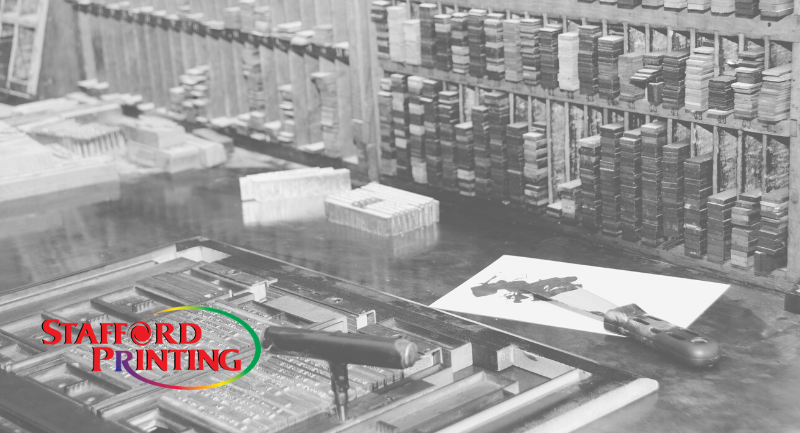Without print, where would our world be? Despite the rise of digital media over the past decade, the printing press has continued to hold its long-standing position as the world’s leading source of information transference. From books to flyers to business materials, print design is a medium that is ingrained into our everyday lives, yet we often don’t think about the mechanics that are behind the print.
Before the digital world existed, printing was the only way for information to be shared, either through images or written language. The first known use of a printing press—or a mechanism similar to our modern press—was found in China around 868 A.D. Archaeologists discovered the remains of a Buddhist text known as The Diamond Sutra, which was created using block printing—a method where panels of hand-carved wooden blocks were used to transfer words into book formats.
However, the first mechanism akin to a modern printing press was developed in the 15th century by German goldsmith Johannes Gutenberg. His invention processed movable type using replica casting, which set the letters in reverse using brass molds. At first, Gutenberg printed calendars and pamphlets, but he is remembered most for printing 180 copies of the first print Bible. His invention spurred what is known as the Typography Revolution and spread to countries such as Italy, France, Spain, Portugal, and England. But his invention didn’t just spark a revolution in print media—it became a weapon of choice for religious revolutionaries in 16th century Europe, as renegades such as John Calvin and Martin Luther took to the printing presses to spread their radical ideas through pamphlets and books. With Gutenberg’s invention, our world has been transformed so that ideologies, beliefs, and perspectives can be shared among communities, connecting people together in ways that were never possible before.
It wasn’t until about 400 years later that print finally made a breakthrough in graphic designs. William Morris is credited for the world’s first graphic print design, as he and other artists began to design textile-like artworks for commercial print. This was the first time that design was being used for intentional consumer benefit rather than for art. Over time, as graphic design began to mainstream, print developed into commercial art used for posters and advertisements created with fine-tuned attention to selling products—the first taste of modern day marketing!
Another big success in the print industry was the modern day Xerox printer. The first model was invented in 1938 by Chester Carlson, who used the laws of electrical charges to transfer an image from one surface to another. It wasn’t until 20 years later that his idea was released to the public as the Xerox 914—the first copier machine. The invention of the copier machine inevitably led to the laser printer, which was also patented by the Xerox company and released in the 1970s. Though it has evolved over the years, the laser printer has become one of the most influential and used machines in business all around the world.
The technology surrounding printing is constantly evolving. Now Xerox printers can connect to WiFi, have multiple features, functions, and apps, and some have touchscreen interfaces. The history of printing created an accessible means for people to share and receive information, connecting the world in a way that’s never been possible at any other time in our history. With printers, we can experience the world.
Sources:
https://www.blog.123rf.com/a-brief-history-of-print-design
https://www.stptexas.com/blog/history-printing-industry
https://www.history.com/topics/inventions/printing-press
